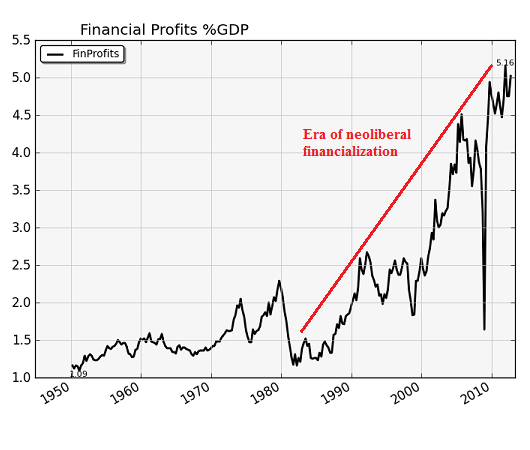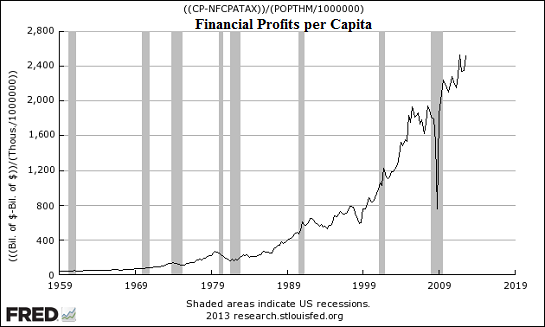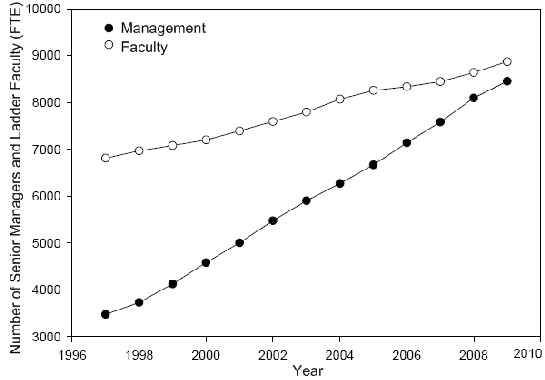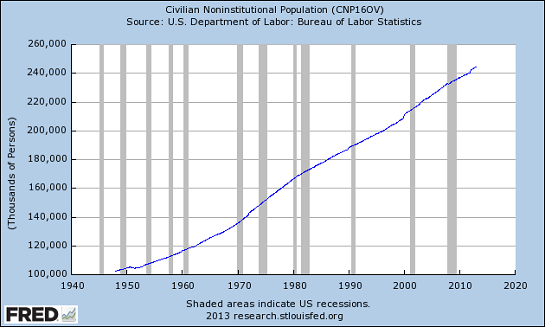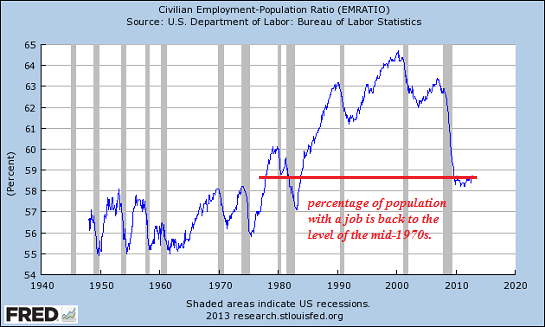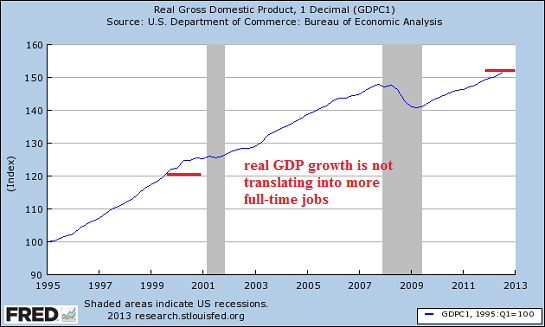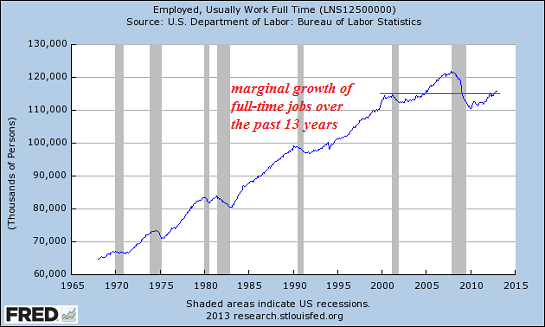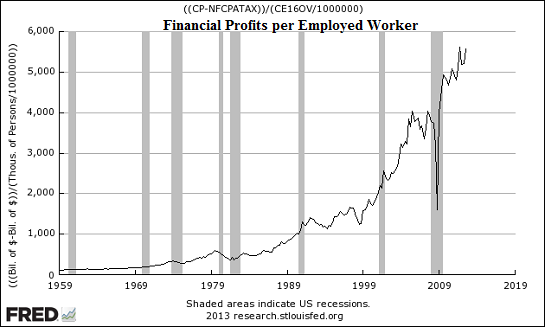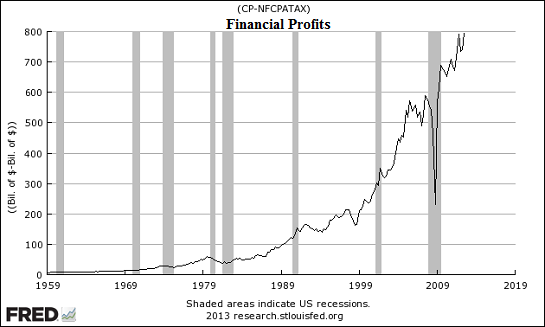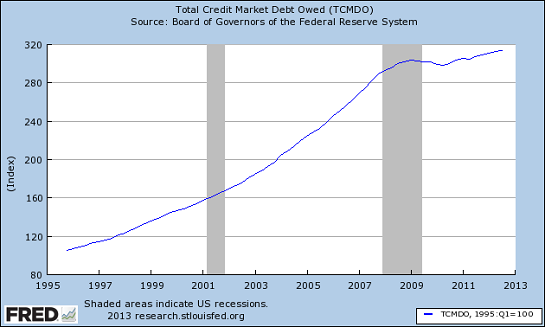If we understand the simple dynamics of value creation, total compensation costs and the cost-basis of doing business (general overhead), then we understand why employment isn't coming back in the U.S.
It is impossible to understand job creation without understanding value creation and labor/overhead costs. People hire other people when their labor creates more value than it costs to hire them.
When labor costs are high, the value created must also be high; it makes no sense to hire someone if doing so generates a loss.
When labor is cheap, the bar of value creation is lowered, and so the risk of hiring a worker is also lower: they don't have to add much value to be worth their wage.
This is why you see many low-value jobs in developing-world countries. There are night watchmen on duty in virtually every parking lot and building in urban Thailand, for example; these workers are providing a fundamental value, "eyes on the street," but it is a low-value proposition: no special skill is required other than being a light sleeper. The cost of their labor is equivalently low, but in a low-cost basis economy such as Thailand's, a very low wage is still a living wage.
In a self-employment example, many vendors in urban Thailand set up their informal food stall (a cart or a tent) for a few hours a day. Their net income is low, because what they provide--readymade food and snacks--is available in abundance, i.e. there are many competitors.
Nonetheless, because the cost basis of life is relatively low, modest earnings from a low cost, low-profit enterprise make the enterprise worthwhile.
Compare that with the typical government job in the U.S. or Europe. It is difficult to measure the true cost of government pension costs, as local governments do their best to mask their pension costs and inflate their pension funds' projected returns. But a back-of-the-envelope calculation yields about a 100% direct labor overhead cost for the typical government job with full healthcare, pension and vacation benefits. So an employee earning $50,000 a year costs $100,000 in total compensation expenses.
Many local government employees on the left and right coasts earn close to $100,000, so their total compensation costs are roughly $200,000 per worker.
How much value must be created by each employee to justify that compensation? Government needn't bother itself with that calculation, as the compensation is not set by market forces and the revenue stream can be increased via higher taxes, junk fees, tuition, licences, permits, etc.
As the legacy costs of healthcare and pensions for retirees become due, local government operating budgets are being gutted to pay these ballooning legacy costs.
As a result, it is now impossible for many local municipalities to fill potholes: it makes no sense to have $100,000/year employees performing low-value work like filling potholes. Put another way, there is a labor shortage in high-overhead government bureaucracies because after paying for legacy pension costs, there is no money left to hire more people at $100,000 a year in total compensation to fill potholes, a job that might be worth $35,000 in total compensation.
The value created by government employees filling potholes is completely out of alignment with the cost of their wages/benefits. If employees cost $100,000 (recall that their annual earnings may be $50,000--we must always use total compensation, not wages as reflected on pay stubs), then in effect all work that generates less than $100,000 in value can no longer be done.
This is why cities and infrastructure are falling apart. Once you raise the cost of compensation far above the value being created by the labor, then most lower-value but nonetheless essential work (e.g. filling potholes) becomes unaffordable to accomplish.
We can understand this dynamic very clearly in a private-sector example. Let's say a high-tech start-up pays its programmers $90,000 a year, with minimal benefits. The total compensation costs of each programmer are thus around $125,000 annually.
Now let's say that the owners are very egalitarian and they pay everyone they hire $90,000 a year ($125,000 in total compensation costs) regardless of their skills or how much value their labor creates. Does it make sense to pay someone $125,000 a year to empty the trash cans in the office? No, it does not. So the trash doesn't get emptied. Does it make sense to have a $125K/year worker being a go-fer, typing correspondence and making copies? No, it does not.
Those menial tasks are pushed down to the programmers and managers, who must do those tasks themselves on a need-only basis.
The new hire is expected to create $200,000 of value annually (the minimum output of value needed to keep the company afloat) or they must be let go, or the firm will lose so much money it goes belly-up.
Now let's say that the local minimum wage law sets the minimum total compensation costs of any employee at $40,000 annually. For example, $25,000 in wages and $15,000 in direct labor overhead (healthcare, disability, workers comp, vacation, 401K pension contributions, etc.)
What is the value created by an administrative assistant who makes copies and empties the trash cans? Let's say the value added is $20,000 a year. At $40,000 per year minimum cost, it makes no sense to hire a "low-cost" worker because the value created by that worker is not even close to their total compensation costs.
As a result, the job of administrative assistant is not just unfilled--it vanishes. It makes no sense to hire workers when the value they create is less than their compensation costs.
How do we measure value created? The most accurate way is to let the market discover the value of the work performed by raising the price of our goods and services to reflect the value added.
Does our product or service become more valuable if the trash in our office is emptied? No; so the trash is not emptied, as the labor cost only raises the cost-basis and lowers gross profit, thus increasing the risk of insolvency.
The same can be said of all sorts of overhead: from healthcare costs that rise far faster than the company's revenues, expansive offices, higher junk fees and taxes, higher energy costs, and so on.
In a global economy, the value added by labor is measured on a global scale. As the overhead costs of healthcare, energy, office rent, local government junk fees, etc. keep rising, each worker in the company must produce more value just for the firm to generate enough gross margins to pay overhead costs and stay solvent.
If overhead costs--the cost-basis of doing business in the U.S.--keep rising faster than gross profits (out of which overhead is paid), then the owners have little choice: they can either close the business before they are personally bankrupted, cut everyone's pay or lay off some employees and somehow raise the productivity of the remaining workers to maintain enough value creation to survive.
This is the U.S. economy in a nutshell. If we understand the simple dynamics of value creation, total compensation costs and the cost-basis of doing business (general overhead), then we understand why employment isn't coming back in the U.S.
RE: THE WEEKLY MUSING REPORTS: If you have subscribed but did not receive the 1/26/13 Report, please email me. If you were receiving the Musings in 2012 but did not get this week's Report, you need to resubscribe or contribute $50 for 2013, using the links below. Thank you for your support and understanding.
Things are falling apart--that is obvious. But why are they falling apart? The reasons are complex and global. Our economy and society have structural problems that cannot be solved by adding debt to debt. We are becoming poorer, not just from financial over-reach, but from fundamental forces that are not easy to identify or understand. We will cover the five core reasons why things are falling apart:
 1. Debt and financialization
1. Debt and financialization
2. Crony capitalism and the elimination of accountability
3. Diminishing returns
4. Centralization
5. Technological, financial and demographic changes in our economy
Complex systems weakened by diminishing returns collapse under their own weight and are replaced by systems that are simpler, faster and affordable. If we cling to the old ways, our system will disintegrate. If we want sustainable prosperity rather than collapse, we must embrace a new model that is Decentralized, Adaptive, Transparent and Accountable (DATA).
We are not powerless. Not accepting responsibility and being powerless are two sides of the same coin: once we accept responsibility, we become powerful.
Kindle edition: $9.95 print edition: $24 on Amazon.com
To receive a 20% discount on the print edition: $19.20 (retail $24), follow the link, open a Createspace account and enter discount code SJRGPLAB. (This is the only way I can offer a discount.)
| Thank you, Cudick A. ($100), for your outrageously generous contribution to this site -- I am greatly honored by your steadfast support and readership. | | Thank you, John L. ($25), for your remarkably generous contribution to this site --I am greatly honored by your support and readership. |
Read more...
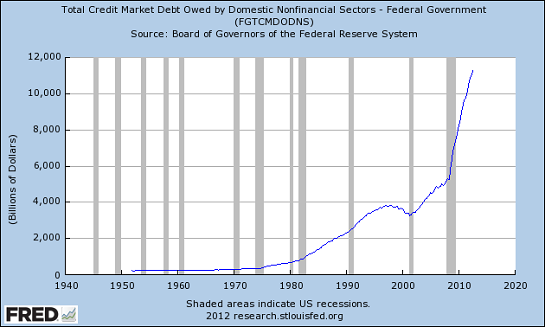
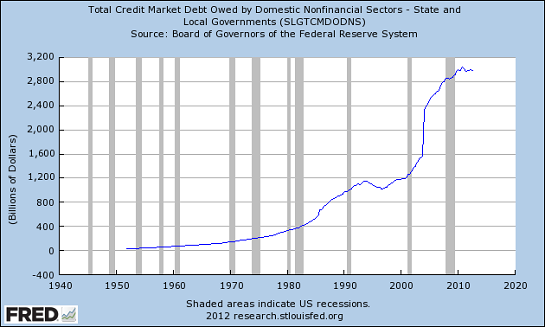
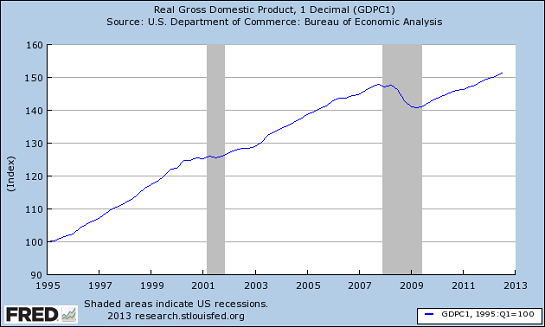





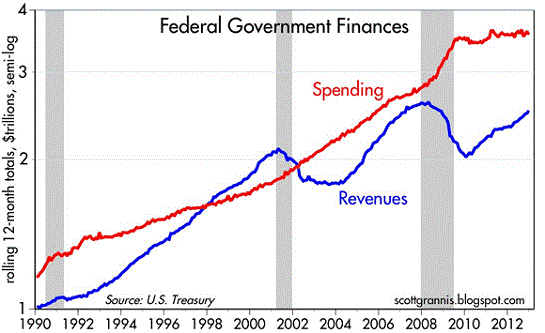
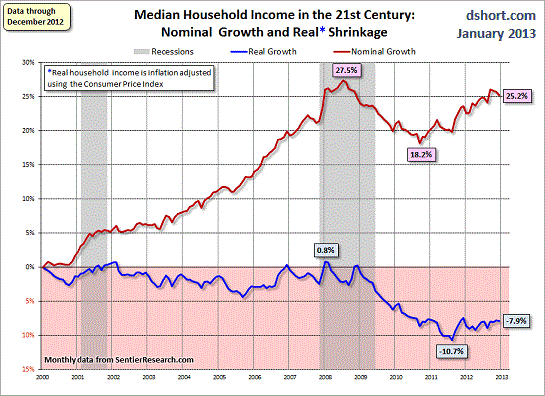
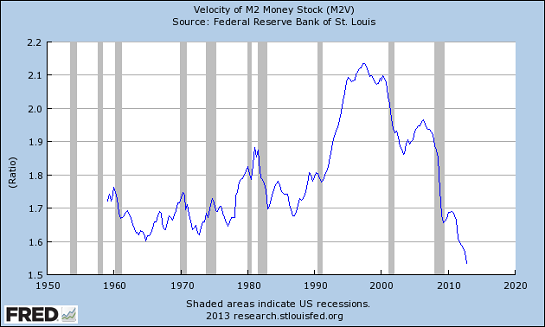
 1. Debt and financialization
1. Debt and financialization



















